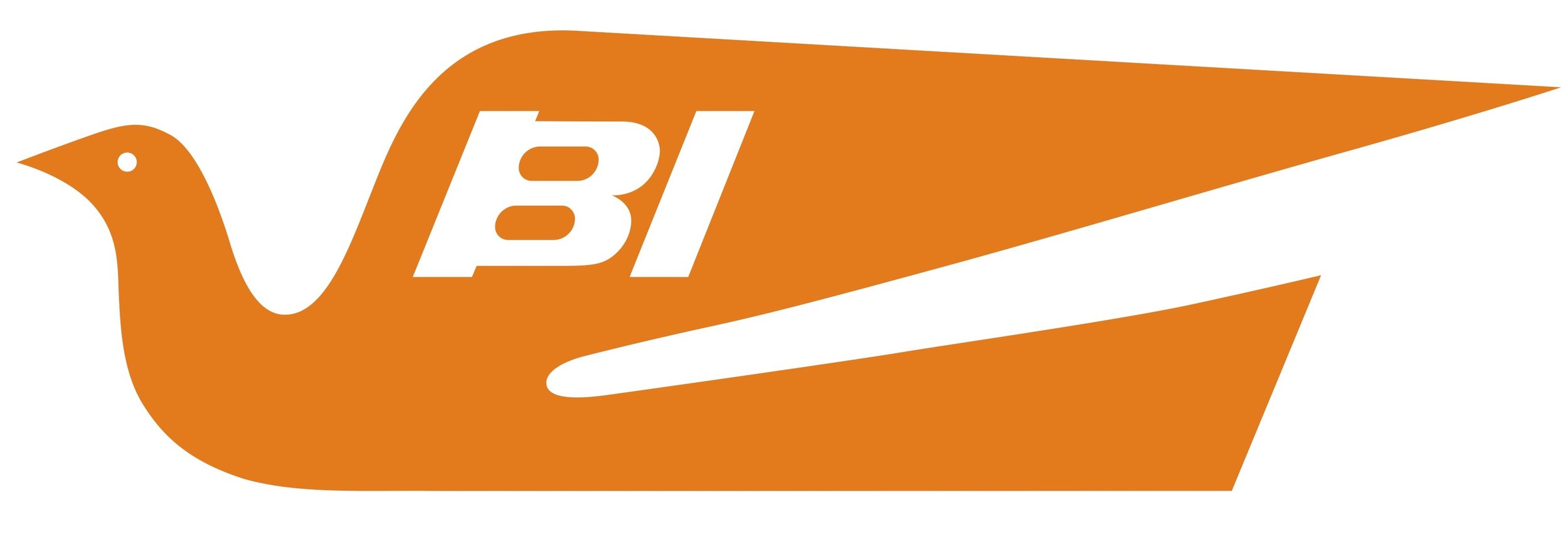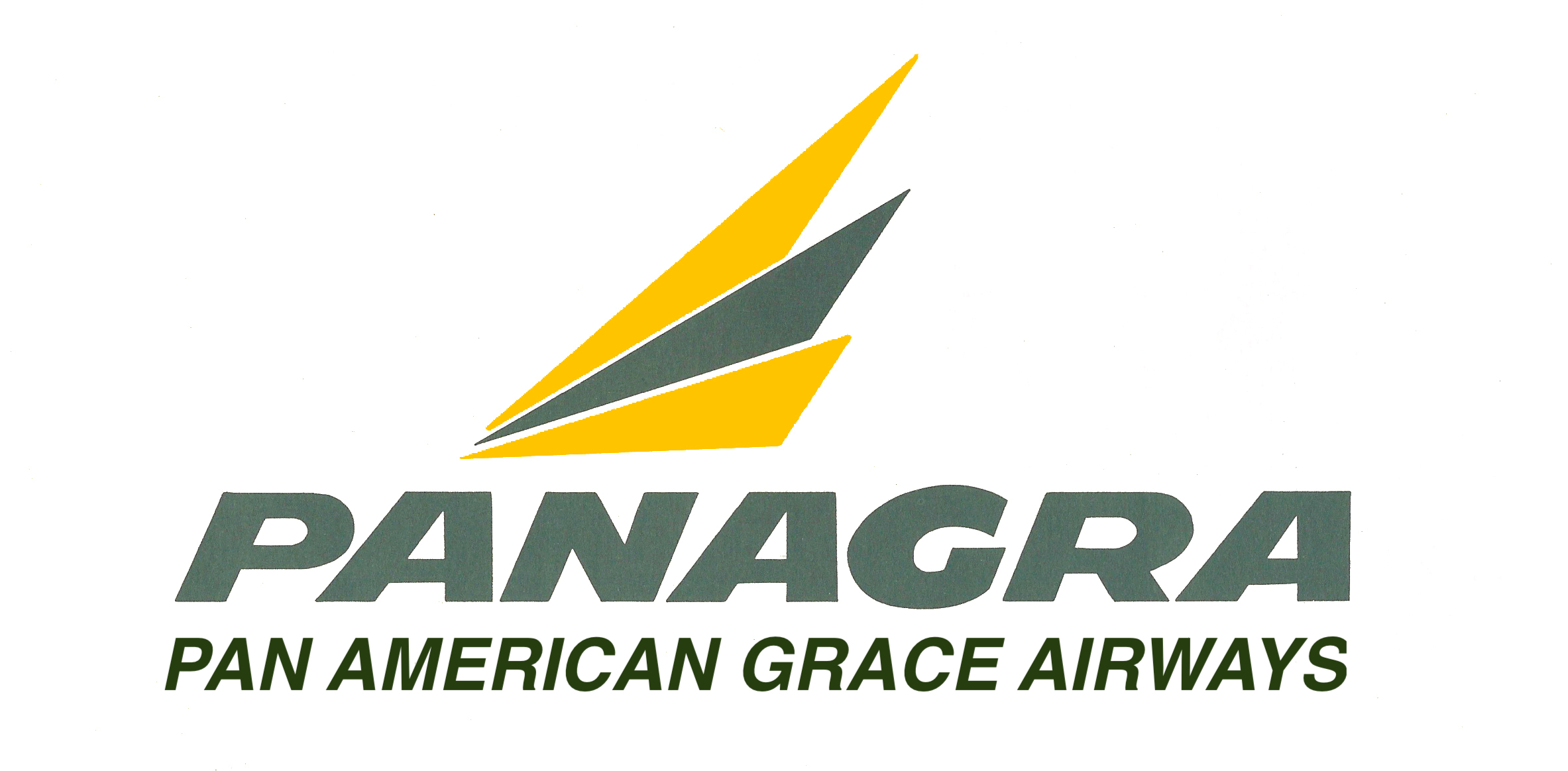Pan American Grace Airways, Inc.
ABOUT PAN AMERICAN GRACE AIRWAYS, INC.
BRANIFF MERGES WITH PANAGRA
On Wednesday, February 1, 1967, Braniff International merged with Pan American Grace Airways, also known by the trade name Panagra. Braniff purchased the 39-year old South American West Coast airline for $30 million USD from its two owners, W. R. Grace and Company and Pan American World Airways, Inc.
Braniff Executive Vice President Charles Edward Acker presented a check for $15 million USD to W. R. Grace and Company Assistant General Council Walter Morris a month earlier in January 1967, which signaled the historic finalization of the merger between the two carriers. Earlier, Braniff had presented a check for $15 million USD to Pan American World Airways for their one-half share in Panagra. With the payments in place, the merger was allowed to commence.
Panagra had been Braniff's chief competitor along the South American West Coast since Braniff began serving the region in June 1948. Panagra's history dated back to 1928, the same year that Braniff was first founded. The Airline was formed by the merger of Peruvian Airways and Chilean Airways. The new company, Pan American Grace Airways, Inc., was jointly and equally owned by both Pan American World Airways, Inc., and W. R. Grace and Company, the largest shipping company in South America.
As early as 1953, the Civil Aeronautics Board had recommended that Pan Am divest itself of Panagra, because of Pan Am's decades-long control of air travel in the region and between US and Latin America. After years of failed negotiations between the two carriers, the mandate was finally fulfilled. Braniff President Charles Edmund Beard had negotiated an earlier agreement for Braniff to buy Panagra for $22 million USD in 1964.
Arrangements were made for Braniff to buy W. R. Grace's half of Panagra for $11 million USD with negotiations to continue into early 1965, for the purchase or Pan Am's half of Panagra. A projected merger date was to have been late summer 1965 but Pan American's legendary Founder and President Juan Terry Trippe did not accept Braniff's offer. With the overhaul of Braniff's management team in April 1965, the merger was further delayed until additional evaluation could be completed by the new management group.
Pan Am had been under pressure from the Civil Aeronautics Board, which requested that the Justice Department file charges against Pan Am, to remedy antitrust problems that the carrier had become involved in by limiting the northward expansion of Panagra. Panagra only operated as far north as Panama and extended south along the West Coast of South America to cities such as Cali, Colombia, Quito and Guayaquil, Ecuador, Lima, Peru, La Paz, Bolivia, Antofagasta and Santiago, Chile and Buenos Aires, Argentina. Pan Am operated scheduled passenger flights north from Panama to Miami.
A New York Federal Court ruled that Pan Am was in violation of the Sherman Anti Trust Act by its actions in regards to limiting Panagra's Northern expansion. The New York Court found that Panagra was not in violation of the antitrust act but that Pan Am was in violation and should divest itself of Panagra stock and its ownership. In 1963, the case was sent to the Supreme Court who ruled that the case fell under the jurisdiction of the CAB.
In December 1965, Braniff International successfully negotiated the purchase of W. R. Grace and Company's 50-percent share in Panagra for $15 million USD. Three months later on March 17, 1966, Braniff further completed an agreement to purchase Pan American World Airways's 50-percent share in Panagra for the same amount. The plan was forwarded to the Civil Aeronautics Board who approved the merger agreement in July 1966.
Braniff paid a very nominal amount for Panagra, which included a fleet of DC-8-31 jets along with prepaid deposits of $27 million on 5 ordered DC-8-62 Intercontinental Jets that were delivered to Braniff beginning in the summer of 1967. At the time of the 1964, merger negotiation, Panagra had not ordered the five Super 62 jetliners. The new negotiation figure of $30 million USD did include the new jets and their handsome deposits, whereas the 1964 figure of $22 million USD included the DC-8-31s and an aging fleet of propeller aircraft.
President Lyndon Baines Johnson approved the merger in October 1966, and on January 19, 1967, Braniff International completed the purchase agreement. The two carriers merged on February 1, 1967, and the combined airline operated 30 flights a week to South America. Braniff also acquired Panagra's interest in the Peruvian airline Faucett.
Braniff Chairman of the Board of Directors Harding L. Lawrence held a press conference in New York City to announce the purchase of Panagra. "This is perhaps the most significant development in air transportation between North and South America, since the advent of the jet aircraft," Lawrence said. He further stated, "On February 1, Braniff will merge the Latin American operations of Panagra with Braniff and begin the first combined service under the Braniff International name."
Lawrence emphasized that a quick integration of the two carriers would occur as well as a major reorganization for both companies. Months of intensive planning were completed and in place to begin a smooth transition that would emphasize leadership, delegation of responsibilities, and effective utilization of the 9918 combined employees as a result of the merger.
New service that resulted from combining the two carriers, featured the first through-flights from San Francisco and Los Angeles to Lima and La Paz and Lima and Santiago that eliminated the need for change of planes at Panama City. New nonstop service was also inaugurated between Santiago, Chile and Miami, Florida, for the first time.
Prior to the merger, many of Braniff's and Panagra's flights departed at the same time but would now be equally spaced to provide more fluid and convenient schedules for Braniff passengers. Five US Gateways would also be used for the first time and included New York, Miami, Houston, Los Angeles and San Francisco, which would allow service to be provided to South America from each major section of the US Mainland.
Braniff acquired seven used aircraft and five new aircraft orders as a result of the merger. The Panagra fleet included two Douglas DC-7B's, one Douglas DC-8-55F (Freighter) Jet Trader, which was leased from Douglas in 1966, four Douglas DC-8-31s, and orders for five Douglas DC-8-62 Intercontinental Jets.
The Douglas DC-7B's (N51703 and N51704) were quickly retired with only the four DC-8-31s and one Series -55 aircraft remaining in the Braniff system. The DC-8-31 aircraft were registered as N8274H, 8275H, 8276H, and N8277H with Panagra. Braniff reregistered N8274H as N1800, N8276H as N1801, and N8277H as N1802 with N8275 remaining as that registration during its service with Braniff.
The DC-8-55F Jet Trader was registered as N1590U and it was reregistered in Braniff's name using that N number. All five DC-8 aircraft were initially left in the Green and Yellow Panagra Color Scheme but black Girard Braniff International titles were added down both sides of the fuselage replacing the Pan American Grace titles. The Panagra Feather Logo on the tail was replaced with a large Girard BI Logo in Black.
After May 1967, four of the DC-8's were painted in the 1967 Alexander Girard/Harper and George Solid Color Scheme. N1800 was painted in Dark Panagra Green, N1801 in Orange, N1802 was painted in New Dark Blue, and the Jet Trader was painted in Orange. The DC-8-31 aircraft were quickly retired from the Braniff fleet as the new DC-8-62 Intercontinental Jets began being delivered starting on August 22, 1967, through December 19, 1967. The Series -62 aircraft were never painted in a proposed Panagra Concept Color Scheme but were instead delivered in the updated 1967 Harper and George color palette for the Girard Solid Color Scheme. Harper and George used the Panagra DC-9 Concept Color Scheme Green and Yellow colors as inspiration for the Panagra Green and Panagra Yellow Solid colors.
On September 29, 1976, the aircraft was sold to Commercial Air Transport Sales who converted it to a Freighter in June 1977. The aircraft was then sold to Concord International Airlines, a freight carrier, on August 1, 1977. Concord reregistered the aircraft as N578JC on July 14, 1979, and operated the aircraft until 1981. Concord sold the aircraft to Conner Airlines, a non-scheduled cargo carrier, on January 1, 1981. The aircraft was scrapped at Miami International Airport in December 1983.
Branif Airways Foundation
Copyright 1926 2024

